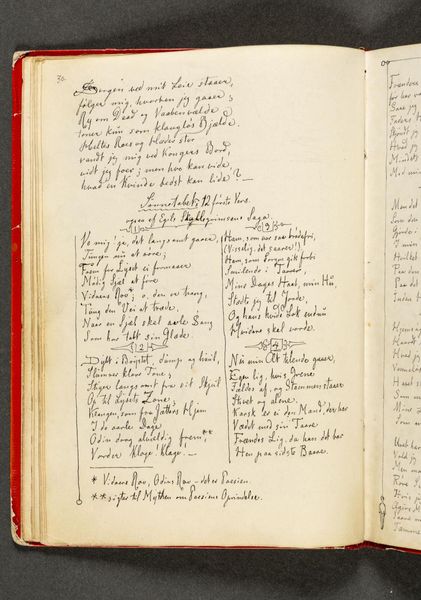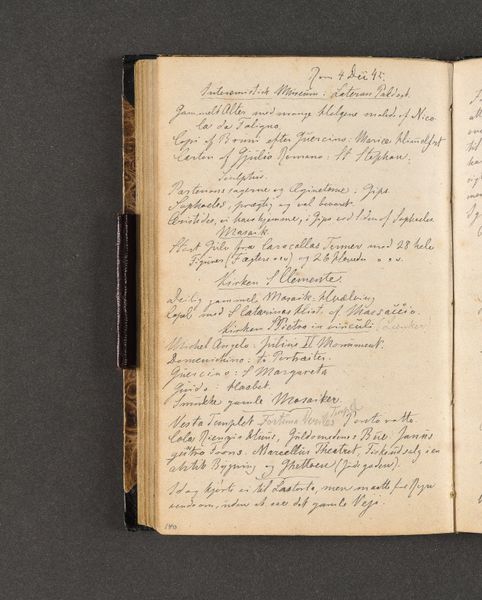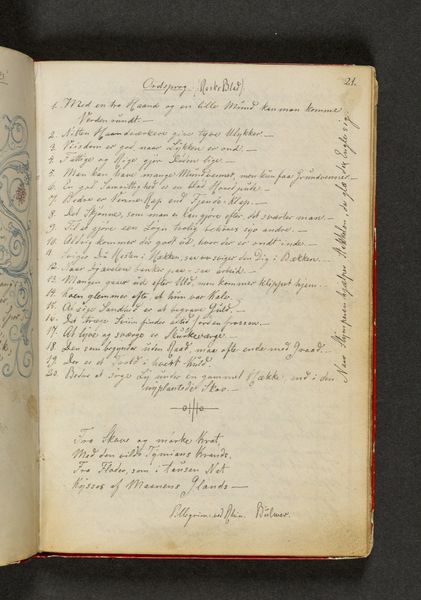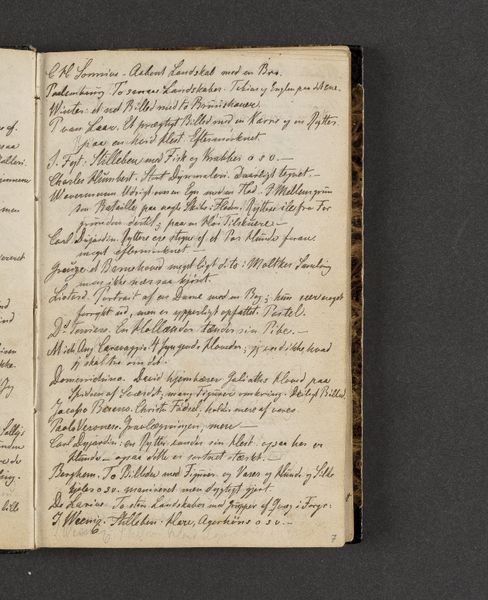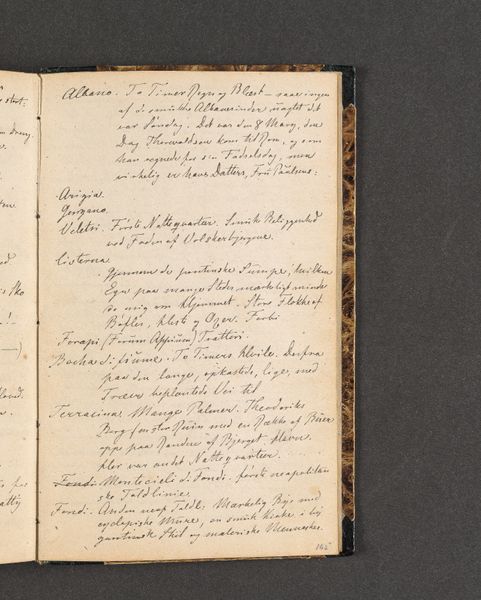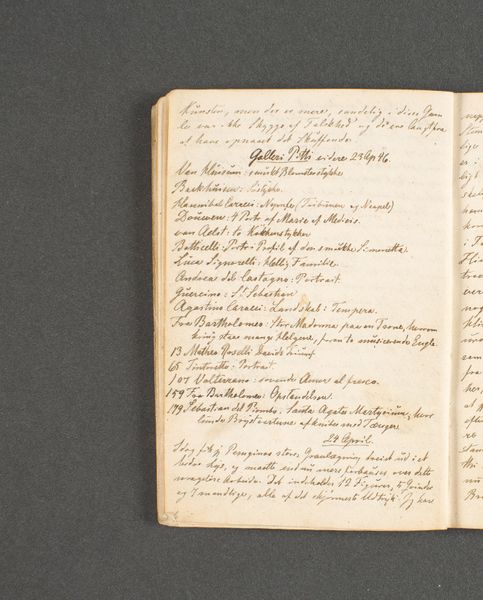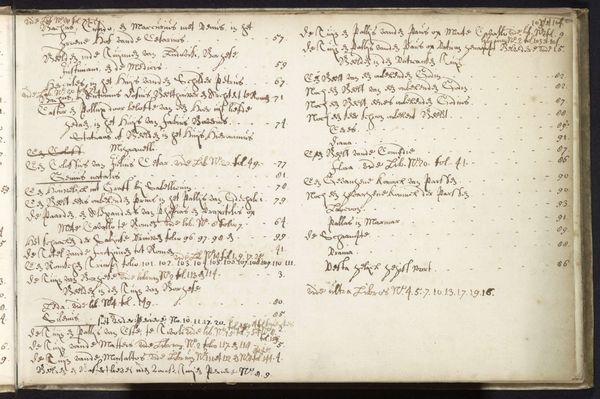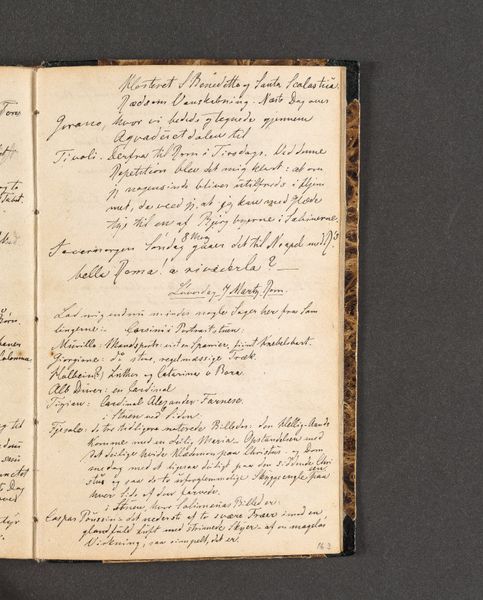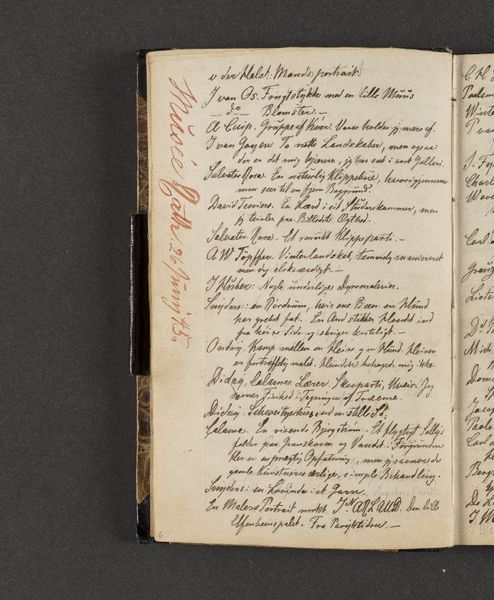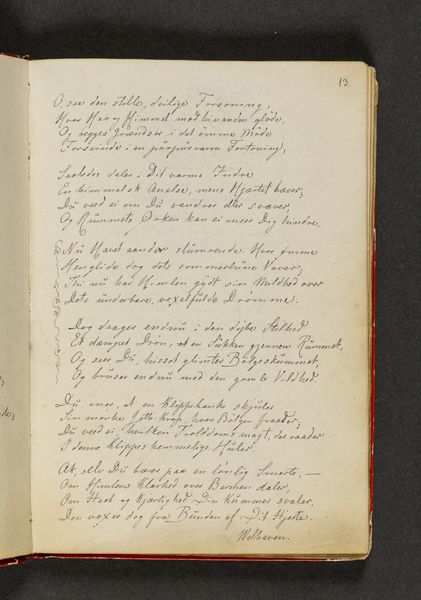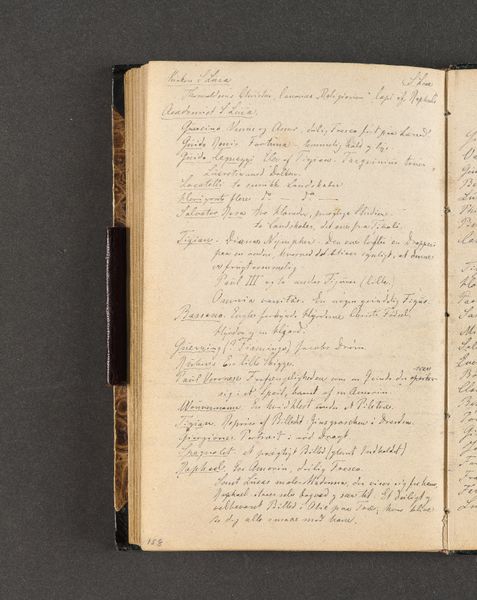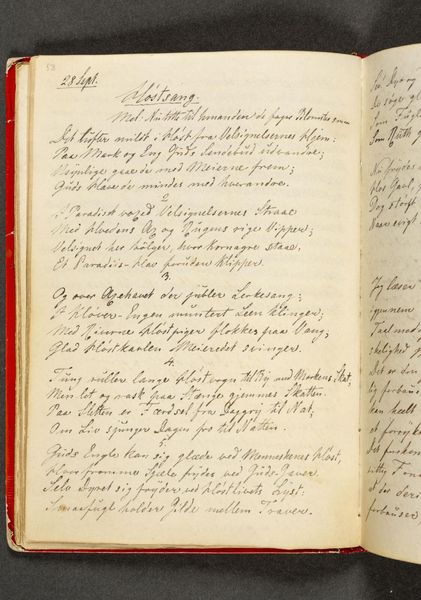
drawing, paper
#
portrait
#
drawing
#
paper
#
romanticism
Dimensions: 192 mm (height) x 133 mm (width) (bladmaal)
Curator: This bound manuscript page, entitled "Vers. Side 31," was created by Johan Thomas Lundbye between 1840 and 1844 using drawing on paper. It’s intriguing, isn't it? It seems almost like a private journal entry or a poet's rough draft. What are your initial thoughts? Editor: Yes, the dense, handwritten text really captures my attention. It’s hard to decipher, giving it a secretive quality. The decorative flourishes around the text also stand out. It looks both carefully composed and also spontaneous. What can you tell me about this piece from your perspective? Curator: Well, from a materialist viewpoint, it is interesting to consider the production and consumption of such an item in the mid-19th century. This wasn't mass-produced; it was the result of an individual’s labor, a very intimate engagement with paper, ink, and pen. The handwriting itself becomes a crucial part of the meaning. Whose story does the paper hold? Does the act of creating and sharing change our response to its value? Editor: That makes me think about how different this is from today's digital world. The slow, deliberate process of writing by hand gives a different weight to the words, doesn't it? The specific texture and type of the paper seem really significant. Curator: Precisely! The materiality forces us to confront the labor involved. Consider also the social context. Was Lundbye wealthy enough to have access to quality paper and ink? Was literacy widespread? How did such factors shape the creation and dissemination of his work? How has consumption evolved from the era this work originated to today's experience of accessing and potentially owning digital reproductions? Editor: Thinking about this work as the product of labor really shifts my understanding. I was initially focused on the artistic intent, but now I am considering the physical reality and socio-economic circumstances. Curator: And what do you find by focusing on that now? Do you now have a broader perspective on how the labor has informed what may be considered purely creative processes? Editor: It highlights how access, skill, and materials all come together. Thanks, that was really eye-opening! Curator: Indeed. Examining the material conditions of art making provides valuable insight that enhances our perspective.
Comments
No comments
Be the first to comment and join the conversation on the ultimate creative platform.
